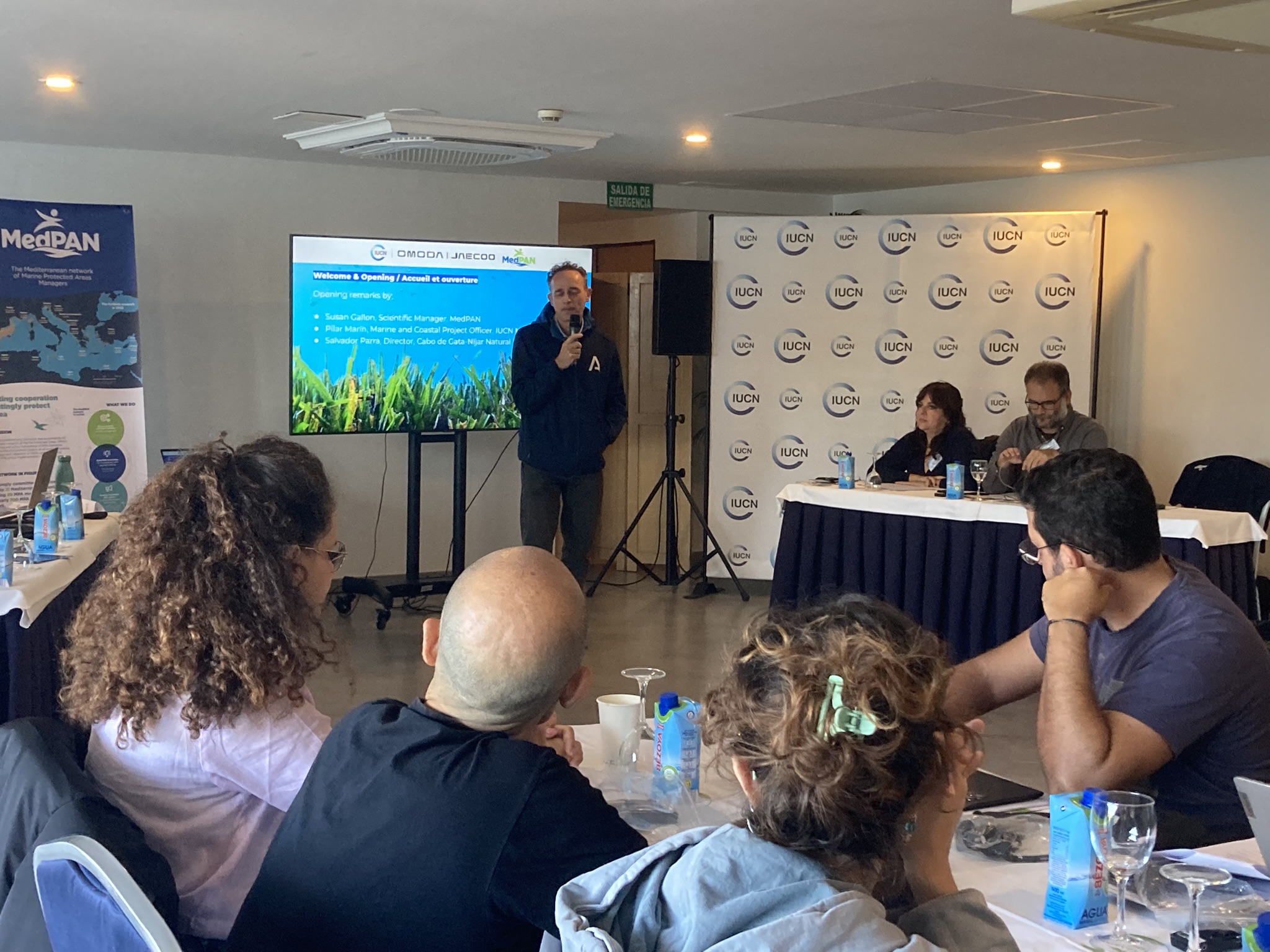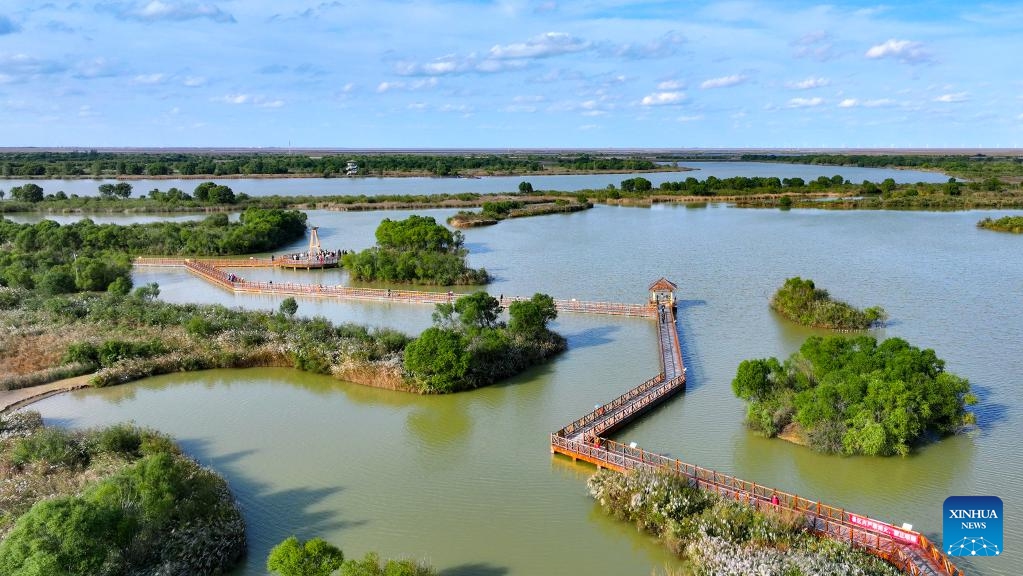Coastal restoration training convenes Mediterranean MPA managers in Cabo de Gata – IUCN

Report on the Mediterranean Coastal and Marine Restoration Training Initiative
A multi-day training event focused on ecological restoration was conducted at the Cabo de Gata-Níjar Natural Park in Andalusia, Spain. The event was co-organized by the IUCN Centre for Mediterranean Cooperation and MedPAN, bringing together a diverse group of experts to advance international conservation commitments.
Key Objectives and Alignment with Sustainable Development Goals (SDGs)
The primary objective of the training was to build capacity for developing and implementing robust restoration plans for Marine Protected Areas (MPAs). This initiative directly supports several United Nations Sustainable Development Goals.
SDG 14: Life Below Water
The training centered on the conservation and sustainable use of marine resources. Key activities were designed to enhance the management of MPAs and contribute to international targets, such as the 30×30 initiative.
- Discussions focused on the conservation, management, and restoration of critical marine habitats, including some of the best-conserved Posidonia seagrass meadows in the Mediterranean.
- Practical sessions included marine litter data collection, directly addressing marine pollution.
- The event aimed to improve the efficiency of restoration measures to protect marine biodiversity.
SDG 13: Climate Action
Participants addressed the significant challenges that climate change and extreme weather events pose to restoration efforts. The training emphasized the need for adaptive management strategies to build resilience in coastal and marine ecosystems.
SDG 17: Partnerships for the Goals
The event exemplified multi-stakeholder collaboration, a cornerstone of SDG 17. It fostered cooperation across national, scientific, and private sectors to achieve shared conservation goals.
- The training was supported by the REST-COAST and Cherish the Nature projects.
- Participants included MPA managers and practitioners from Albania, Croatia, Cyprus, France, Italy, Lebanon, Spain, and Tunisia, along with a delegation from Saudi Arabia.
- Collaboration involved public sector representatives (Junta de Andalucia), scientific bodies (Hombre y Territorio), and the private sector (Chery Group – OMODA-JAECOO).
Training Modules and Key Discussion Points
The four-day program combined theoretical sessions with practical, in-situ learning experiences. The curriculum was designed to address critical aspects of coastal and marine restoration.
Core Topics
- Restoration Planning and Policy: Participants learned how to build strong restoration plans that align with international frameworks like the EU Nature Restoration Regulation and contribute to National Restoration Plans.
- Adaptive Management: Sessions highlighted the necessity of long-term, adaptive planning that considers various scientific and social scenarios to counteract climate change impacts.
- Stakeholder Engagement: The importance of consensus-building and engaging local stakeholders was a recurring theme, recognized as essential for successful monitoring and management.
- Ecological Connectivity: The role of connectivity in upscaling restoration actions and improving their effectiveness at national and Mediterranean scales was discussed.
Practical Applications and Fieldwork
- Participants learned about the practical management of Cabo de Gata Natural Park.
- An in-situ demonstration of eco-moorings was conducted.
- A hands-on marine litter data collection exercise was organized, utilizing a monitoring protocol that also promotes citizen science, contributing to data for SDG 14.
Strategic Frameworks and Future Directions
The training leveraged outcomes from established projects and international standards to provide guidance for enhancing restoration effectiveness.
Policy and Governance
- Lessons learned from the REST-COAST H2020 project on restoration policy and governance were shared.
- The IUCN Green List of Protected and Conserved Areas standard was presented as a tool to guide restoration efforts, in alignment with the GreenList4MMPAs Interreg Euro-MED project.
Financing and Support
- A dedicated session explored financing and support mechanisms for restoration, drawing on REST-COAST project outcomes.
- IUCN presented case studies of successful private sector engagement in conservation activities, demonstrating a key pathway for achieving SDG 17.
Participants concluded the training by agreeing on the need for continued capacity-building actions. The results and knowledge exchanged will be used to inform and strengthen current and future restoration and conservation plans throughout the Mediterranean, reinforcing the region’s commitment to the Sustainable Development Goals.
Analysis of Sustainable Development Goals in the Article
1. Which SDGs are addressed or connected to the issues highlighted in the article?
- SDG 14: Life Below Water: The article’s central theme is the restoration and conservation of marine and coastal ecosystems, specifically within the Cabo de Gata-Níjar Natural Park. It discusses Marine Protected Areas (MPAs), seagrass meadows, marine litter, and the 30×30 target for ocean conservation.
- SDG 15: Life on Land: Although the focus is marine, the principles of ecosystem restoration, biodiversity conservation, and habitat protection are directly relevant. The park is also a “Special Protection Area for Birds,” linking terrestrial and marine biodiversity goals. The 30×30 target mentioned applies to both land and sea.
- SDG 13: Climate Action: The article explicitly mentions the “challenges posed by climate change and extreme events to restoration efforts.” Restoring coastal ecosystems like seagrass meadows is a key nature-based solution for climate adaptation (coastal protection) and mitigation (carbon sequestration).
- SDG 17: Partnerships for the Goals: The event described is a multi-stakeholder, international collaboration. It was co-organized by IUCN and MedPAN, involved participants from eight Mediterranean countries, and brought together scientists, public sector representatives, NGOs, and the private sector to achieve common conservation goals.
- SDG 4: Quality Education: The article describes a “training” event focused on capacity building. Its purpose was for participants to “learn and exchange” knowledge and skills on ecosystem restoration, contributing to education for sustainable development.
2. What specific targets under those SDGs can be identified based on the article’s content?
-
Target 14.2: By 2020, sustainably manage and protect marine and coastal ecosystems… and take action for their restoration.
- The entire article focuses on this, detailing a training event on how to “build strong restoration plans” and discussing the “conservation, management, and restoration” of the Cabo de Gata Natural Park, including its “Posidonia seagrass meadows.”
-
Target 14.5: By 2020, conserve at least 10 per cent of coastal and marine areas.
- The article references a more ambitious version of this goal, stating that the training helps participants “contribute to reaching international commitments, such as the 30×30 Target,” which aims to protect 30% of the planet’s oceans by 2030.
-
Target 14.1: By 2025, prevent and significantly reduce marine pollution of all kinds, including marine debris.
- The article mentions a practical exercise where participants “engage in a marine litter data collection using a monitoring protocol,” directly addressing the issue of marine debris.
-
Target 15.5: Take urgent and significant action to reduce the degradation of natural habitats, halt the loss of biodiversity and… protect and prevent the extinction of threatened species.
- The discussion on creating “conservation, management, and restoration” plans for a park that is a “Special Protection Area for Birds” and focusing on “monitoring of particular species’ indicators” aligns with this target.
-
Target 13.1: Strengthen resilience and adaptive capacity to climate-related hazards.
- The article notes that participants reflected on “challenges posed by climate change and extreme events to restoration efforts, and the need to plan with a long-term and adaptative view.” Restoring coastal ecosystems is a direct action to build resilience.
-
Target 17.16: Enhance the global partnership for sustainable development, complemented by multi-stakeholder partnerships.
- The event is a clear example of this target in action, described as a “meaningful exchange and example of Mediterranean cooperation across countries and sectors, bringing together science, practice and policy.” It involved IUCN, MedPAN, public bodies, scientists, and the private sector.
-
Target 4.7: Ensure that all learners acquire the knowledge and skills needed to promote sustainable development.
- The event is described as a “training” and a “capacity building action” where participants “learned and exchanged” knowledge on sustainable ecosystem management and restoration.
3. Are there any indicators mentioned or implied in the article that can be used to measure progress towards the identified targets?
- Percentage of protected marine areas: The direct mention of the “30×30 Target” implies a clear quantitative indicator for measuring progress towards Target 14.5.
- Species-specific indicators: The article refers to the need for management plans that “can facilitate the monitoring of particular species’ indicators.” This suggests that the population size, health, or distribution of key species (like birds or marine life in seagrass meadows) is used as a measure of restoration success (relevant to Targets 14.2 and 15.5).
- Effectiveness of protected area management: The reference to the “IUCN Green List of Protected and Conserved Areas” implies an indicator. The Green List provides a standard to measure if MPAs are being effectively managed and achieving their conservation outcomes (relevant to Target 14.2).
- Amount of marine litter: The activity of “marine litter data collection using a monitoring protocol” implies that the quantity and type of litter collected serve as a direct indicator for monitoring marine pollution (relevant to Target 14.1).
- Number of collaborative actions and participants: The detailed description of the international and multi-sectoral nature of the training implies that the number of countries, organizations, and experts involved serves as an indicator of successful partnerships (relevant to Target 17.16).
4. Summary Table of SDGs, Targets, and Indicators
| SDGs | Targets | Indicators (as identified in the article) |
|---|---|---|
| SDG 14: Life Below Water |
14.1: Reduce marine pollution. 14.2: Protect and restore marine and coastal ecosystems. 14.5: Conserve coastal and marine areas. |
– Data from marine litter collection and monitoring. – Use of species’ health as indicators; Adherence to IUCN Green List standards for management effectiveness. – Progress towards the “30×30 Target” (percentage of marine area protected). |
| SDG 15: Life on Land | 15.5: Halt biodiversity loss. | – Monitoring of particular species’ indicators (e.g., in the Special Protection Area for Birds). |
| SDG 13: Climate Action | 13.1: Strengthen resilience and adaptive capacity to climate-related hazards. | – Implementation of restoration plans with a long-term, adaptive view to counter climate change effects. |
| SDG 17: Partnerships for the Goals | 17.16: Enhance the global partnership for sustainable development. | – Number of participating countries and sectors (public, private, scientific, civil society) in collaborative events. |
| SDG 4: Quality Education | 4.7: Education for sustainable development. | – Number of capacity-building actions organized; Number of experts and managers trained. |
Source: iucn.org
What is Your Reaction?
 Like
0
Like
0
 Dislike
0
Dislike
0
 Love
0
Love
0
 Funny
0
Funny
0
 Angry
0
Angry
0
 Sad
0
Sad
0
 Wow
0
Wow
0
















































:focal(1500,1000)/https://media.globalcitizen.org/a6/9a/a69a4720-d8a1-4715-b596-18738d03c05c/rotary_polio_hero_image.jpg?#)







/countries/sri-lanka/photo-credit---dmc-sri-lanka.tmb-1200v.jpg?sfvrsn=dc298bcc_1#)

















